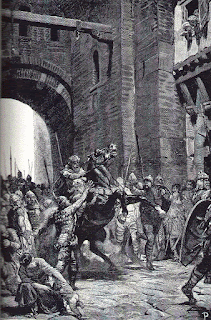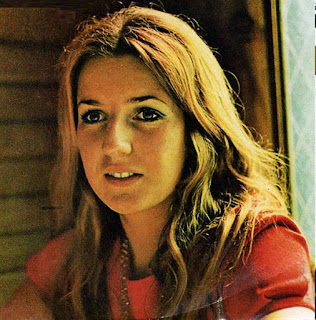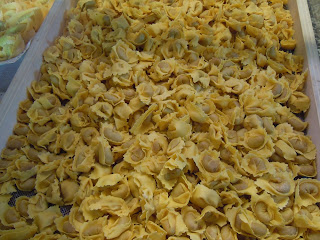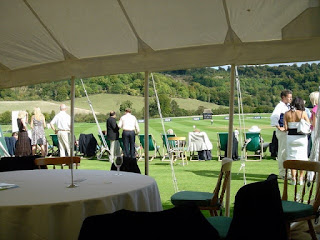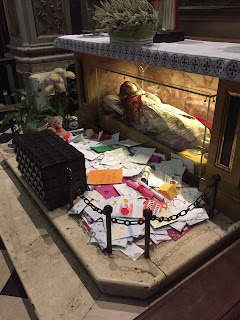No one has saved more penalties in Serie A matches
 |
| Gianluca Pagliuca played for Italy in the 1994 World Cup final |
The footballer Gianluca Pagliuca, once the most expensive
goalkeeper in the world, record-holder for the most appearances by a goalkeeper
in the Italian soccer championship and still the stopper with the most penalty
saves in Serie A, was born on this day in 1966 in Ceretolo, a small town about
10km (6 miles) from the centre of Bologna.
Pagliuca made 592 appearances in Serie A, taking the record
previously held by Italy’s World Cup-winning captain Dino Zoff for the most by
a goalkeeper in the top division of the Italian League. He held the record for
10 years from September 2006 until it was overtaken by another of Italy’s
greatest goalkeepers, Gianluigi Buffon, in 2016.
He played for four major clubs in his career, starting with
Sampdoria, with whom he won the Serie A title – the Scudetto – in 1990-91,
playing in the team that included Gianluca Vialli, Roberto Mancini, Beppe
Dossena, Attilio Lombardo and Ivano Bonetti.
After Sampdoria, he represented Internazionale in Milan, his
home-town club Bologna and the small club Ascoli, from Ascoli Piceno in Marche.
He also made 39 appearances for the Italian national team
and was chosen for three World Cup finals squads, picking up a runners-up medal
in the United States in 1994, even though his participation was marred by a
suspension for two matches.
 |
| Pagliuca was renowned for saving penalties |
This followed his red card in Italy’s group match against
Norway, when he was sent off for handling the ball outside his penalty area, in
the process becoming the first goalkeeper to be dismissed in the history of the
World Cup finals.
Pagliuca’s achievements with Sampdoria, where he also won a
European Cup-winners’ Cup medal and a runners-up medal in the Champions League
following a 1-0 defeat against Barcelona at Wembley, earned him a move to Inter
in 1994 for a fee of £7 million, which at the time was the highest fee to be
paid for a goalkeeper.
At Inter he played in two consecutive UEFA Cup finals,
defeating Italian rivals Lazio in the second, and might have stayed in Milan
longer had new coach Marcello Lippi not brought in Angelo Peruzzi from his
former club, Juventus, to be first choice.
At that time, in 1999, Pagliuca had the possibility of
continuing his career in England with Aston Villa, a club he had followed as a
teenager when satellite TV channels first allowed Italian audiences to follow
English football.
He chose instead to join Bologna, his first love as a boy
growing up in the city’s outskirts, although he said that playing at Villa Park
for Inter in a UEFA Cup tie in 1994 had been one of the proudest moments of his
career.
 |
| Pagliuca won the Serie A title with Sampdoria |
Inter lost that tie on a penalty shoot-out, although in
keeping with his reputation Pagliuca did save one of Villa’s penalties. In
Serie A, his tally of 24 penalty saves has still not been beaten.
He also saved a penalty in the shoot-put that settled the
1994 World Cup final in Pasadena, although Italy were beaten by Brazil after
both Franco Baresi and Roberto Baggio missed with their kicks and Daniele
Massaro saw his attempt saved.
When Pagliuca announced his retirement while playing for
Ascoli in 2007, he was 40 years old and had racked up an incredible 786
competitive appearances in all competitions.
Since quitting as a player, Pagliuca has combined working
for Bologna as a member of the coaching staff with appearing on Sky Italia and
the Mediaset subscription channels as a pundit.
 |
| Ceretolo is a popular residential area outside Bologna |
Travel tip:
Ceretolo, where Pagliuca was born and played his first
football with the Polisportiva Ceretolese amateur club, was for many centuries a
hamlet outside the larger town of Casalecchio di Reno, a few kilometres outside
Bologna in the Emilia-Romagna region. It
has an 18th century church, dedicated to the saints Antonio and
Andrea and a bell tower that survived both an earthquake in 1928 and bombing in
the Second World War. In more recent years it has grown into popular residential
area.
 |
| The church of San Michele in Bosco offers panoramic views over the city of Bologna |
Travel tip:
Visitors to Bologna can enjoy impressive panoramic views across
the city by taking only a short trip out of the city centre into the Colli
Bolognesi, the hills just to the south of the city, which itself is built on a
flat plain at the southern edge of the Po Valley. One good vantage point is the
church of San Michele in Bosco, which was built during the Middle Ages and
refurbished by Olivetan monks in the 17th century as part of a
religious complex that included a convent. The churchyard can be reached by a
10-minute bus ride or on foot from the centre and offers a view across the
whole city.
Also on this day:

